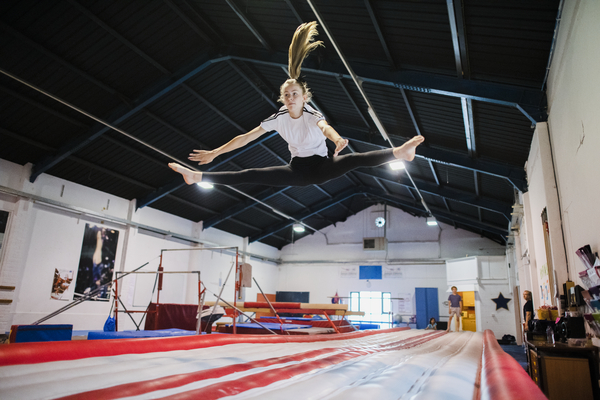At the beginning of the 19th century, practically every state that embarked on the path of industrial growth and the development of military affairs came to the conclusion that it was necessary to develop sports and educate physically healthy young people. And each country has found its own way of implementing such plans, having formed its own system of compulsory exercises and general hardening of the body. The most famous were German, Swedish and French ones. For example, it was in Germany that exercises on the uneven bars, the crossbar and other gymnastic apparatus were developed.

The popularization of sports and the emergence of world-class competitions led to the active spread of gymnastics as a sport. Clear rules were approved, training programs for athletes were developed.
What are the basics in artistic gymnastics?
A brief history of artistic gymnastics must necessarily mention the different approach to athletes of different sexes. Gymnastics was originally a male sport, and only a few decades later women were allowed to participate in world and European championships and the Olympic Games. The list of sports available to different sexes, and the requirements for execution, etc. are also different.
The men’s all-around program consists of six exercises. The women’s all-around contains a smaller list – there are no rings and a crossbar, instead of a horse – a log, and parallel bars are replaced by shells of different heights.
What are the special features of gymnastics?
Passing the selection for the gymnastics school, the coach tries to consider the flexibility and condition of the child’s vestibular apparatus. In addition, an important point is the baby’s interest in the projectile. If he is afraid of him, then the path to training is closed for him. It is worth noting that artistic gymnastics is a rather intense sport with complex and at the same time interesting sports elements.
What are the main advantages of gymnastics?
Let’s take a closer look at what are the main advantages of doing gymnastics. They are commonly referred to as:
- significant development of body flexibility;
- strengthening tendons and joints (with proper warm-up before the start of classes, trauma is reduced by 80 percent);
- normalization of the vestibular apparatus due to regular training;
- strengthening the immune system of a small athlete, parents forget about colds forever;
- tone of all muscles of the body;
- the creation of a beautiful body (the elegance of a girl who regularly visits such a section will be envied by everyone around).
Additional advantages are: an increase in the child’s self-esteem, psychological emancipation, the emergence of self-confidence.
Are there any disadvantages of gymnastics?
Many requirements. A child is not to be accepted into any section without a certificate from a doctor: no matter how mobile and flexible the child is, the coach will definitely require him to undergo a medical examination. And this is not a formality – gymnastics has serious contraindications, including scoliosis, bronchial asthma, heart disease, myopia and a whole range of orthopedic problems.
Growth retardation. When choosing this sport, remember that high loads on the spine seriously slow down a person’s growth. And if your child is already a little lower than his peers, then, most likely, he should choose another activity.
Injury. No matter how carefully athletes do, sooner or later they will definitely have health problems. The sore point of all gymnasts is the spine, it is he who suffers most from falls from high apparatuses and hard landings. Throw in the constant muscle pain, 5-hour daily workouts, and you have a pretty clear idea of what future champions will face.
Have you thought about turning your baby into a super gymnast yet? Then forward – to the section.
